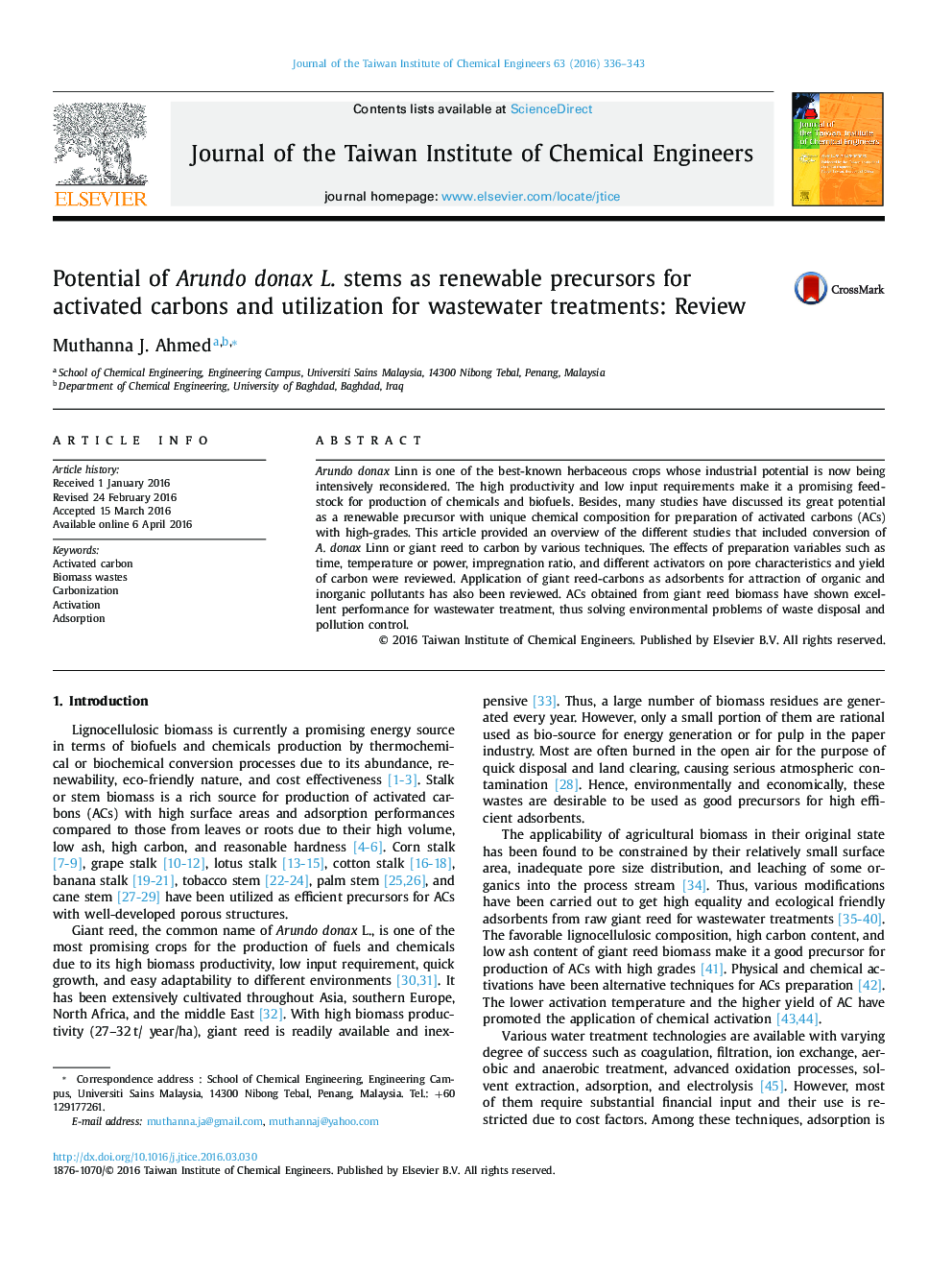| Article ID | Journal | Published Year | Pages | File Type |
|---|---|---|---|---|
| 690420 | Journal of the Taiwan Institute of Chemical Engineers | 2016 | 8 Pages |
•Activated carbons (ACs) preparation from giant reed has been reviewed.•Activation temperature was of greatest effect on structure and yield of ACs.•High capacities of ACs towards antibiotics were reported compared to heavy metals.•Initial adsorbate concentration and ACs dose were of high effect on adsorption.•Future perspectives in this direction have been proposed.
Arundo donax Linn is one of the best-known herbaceous crops whose industrial potential is now being intensively reconsidered. The high productivity and low input requirements make it a promising feedstock for production of chemicals and biofuels. Besides, many studies have discussed its great potential as a renewable precursor with unique chemical composition for preparation of activated carbons (ACs) with high-grades. This article provided an overview of the different studies that included conversion of A. donax Linn or giant reed to carbon by various techniques. The effects of preparation variables such as time, temperature or power, impregnation ratio, and different activators on pore characteristics and yield of carbon were reviewed. Application of giant reed-carbons as adsorbents for attraction of organic and inorganic pollutants has also been reviewed. ACs obtained from giant reed biomass have shown excellent performance for wastewater treatment, thus solving environmental problems of waste disposal and pollution control.
Graphical abstractFigure optionsDownload full-size imageDownload as PowerPoint slide
